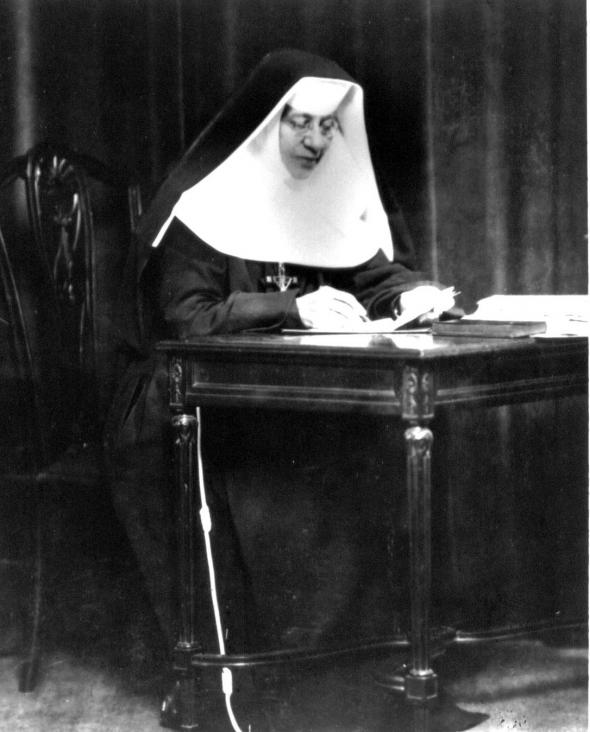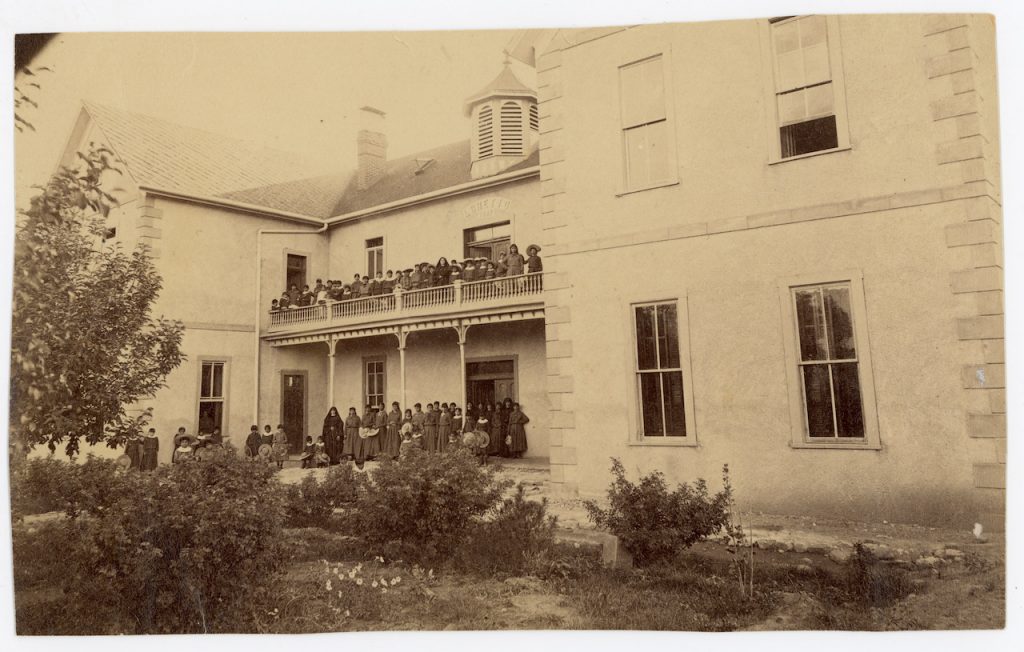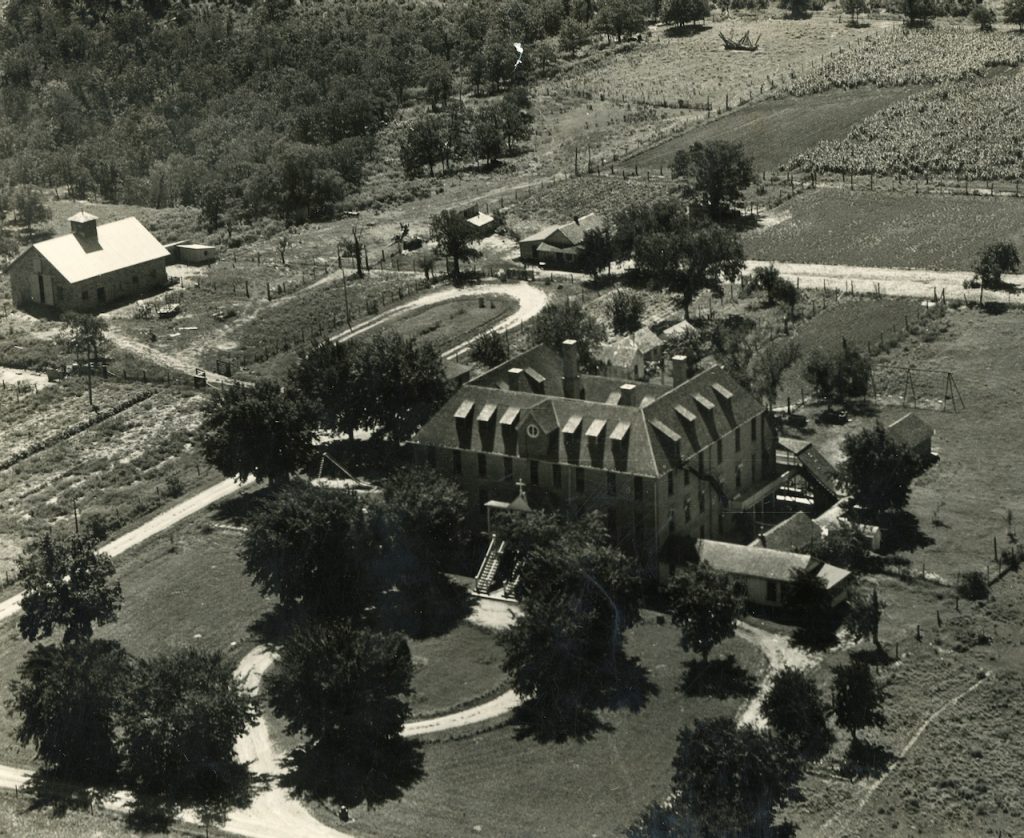Loretto and the Saint
Posted on February 1, 2022, by Eleanor Craig SL
Imagine having an income of $1000 a day and an inclination to be helpful to the most neglected communities of people. What would you do with your money?
In 1885, Katharine Drexel lost her father, a wealthy and socially prominent Philadelphia banker; Katharine was 27 years old. She and her two sisters inherited everything, including their parents’ conviction that their wealth should be socially useful. Katharine and her sisters sought the highest authorities on social need. They traveled the United States for over a year with the head of the Bureau of Catholic Indian Missions, they examined works in the Southeast created for former slaves, and they met with the Pope. The Pope told Katharine to dedicate herself as a missionary and tend to some of the work herself. So she did.

Image courtesy of Wikimedia Commons.
By 1889, Katharine was preparing herself in the novitiate of the Sisters of Mercy to create a new congregation dedicated to the Indians and the “colored” people of the United States. In nearly a century and a half, Katharine’s Sisters of the Blessed Sacrament would establish and contribute to more than 145 separate works. They are still going strong in sixteen sites across the country. Among other contributions, Katharine Drexel and her Sisters established and continue to teach at Xavier University in New Orleans, the only Catholic historically black university.
Even before Katharine dedicated herself as a vowed missionary, she was working and spending on behalf of Native Americans and African Americans. In 1886 or 1887, she visited New Mexico to learn of the needs among the Pueblo Indians. In Santa Fe, she set in motion and paid for the erection of the St. Catherine Indian School. When the school building was completed, the Sisters of Loretto were the first teachers. During the same New Mexico visit, Katharine spent time in Bernalillo with the Loretto Sisters and added her mite to the fund to enlarge the Loretto Indian boarding school. According the Loretto annals in Bernalillo, Katharine regularly sent an “allowance” for Indian girls’ schooling until 1936.

Image from the Loretto Heritage Center.
On her 1886-87 tour of the United States, Katharine also visited the Osage Nation in Pawhuska, Oklahoma. The federal government had contracted with the Quakers to provide schooling for the Osage when they were “removed” from Kansas. However, many of the elders preferred Catholic education like the schooling they had had at Osage Mission with the Sisters of Loretto and the Jesuits. Virtually on the spot, Katharine allocated some of her $1000-a-day wealth to create St. Louis School for Indian Girls, a large and sturdy building where Sisters of Loretto would be invited to teach three decades later.

Image from the Loretto Heritage Center.
These bare-bones facts suggest many questions about Loretto and Katharine, especially whether Katharine met and worked with Loretto’s intrepid builder, Mother Praxedes Carty. They were about the same age—Praxedes (Susan) Carty was born in Ireland in 1854; Katharine Drexel in Philadelphia in 1858. Praxedes was the founding superior of Loretto’s Bernalillo mission. In the late 1880s she was superior at Las Cruces 240 miles south, but her responsibilities often took her through Bernalillo to Santa Fe. Did the two women meet and share common interests? Praxedes was Loretto’s Mother General from 1896 to 1922; Katharine led the Blessed Sacrament Sisters from 1891 until well into the 20th century. Did the two leaders provide mutual support and a sounding board for one another as the years passed? While these similarities indicate that such a connection was possible, a search through Praxedes’ correspondence yields no clues of such a further relationship between St. Katharine Drexel and Loretto.
